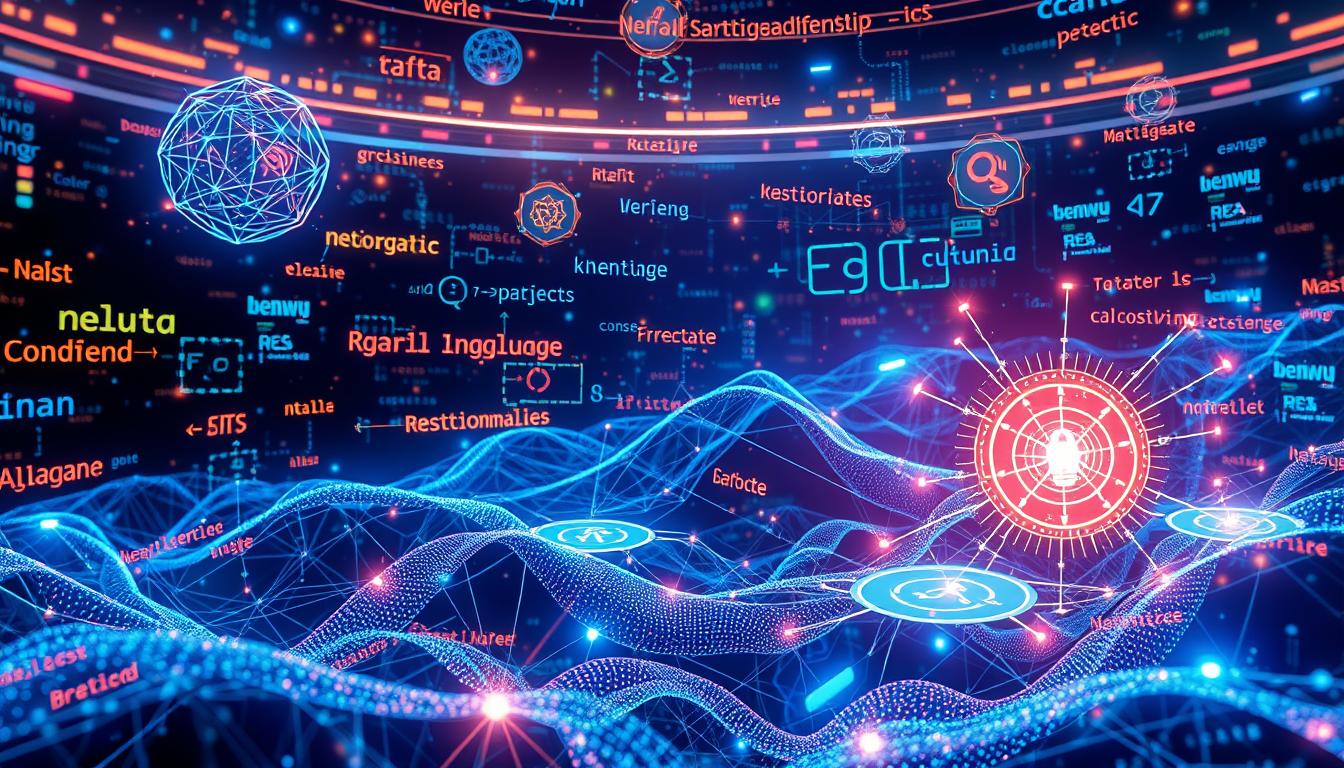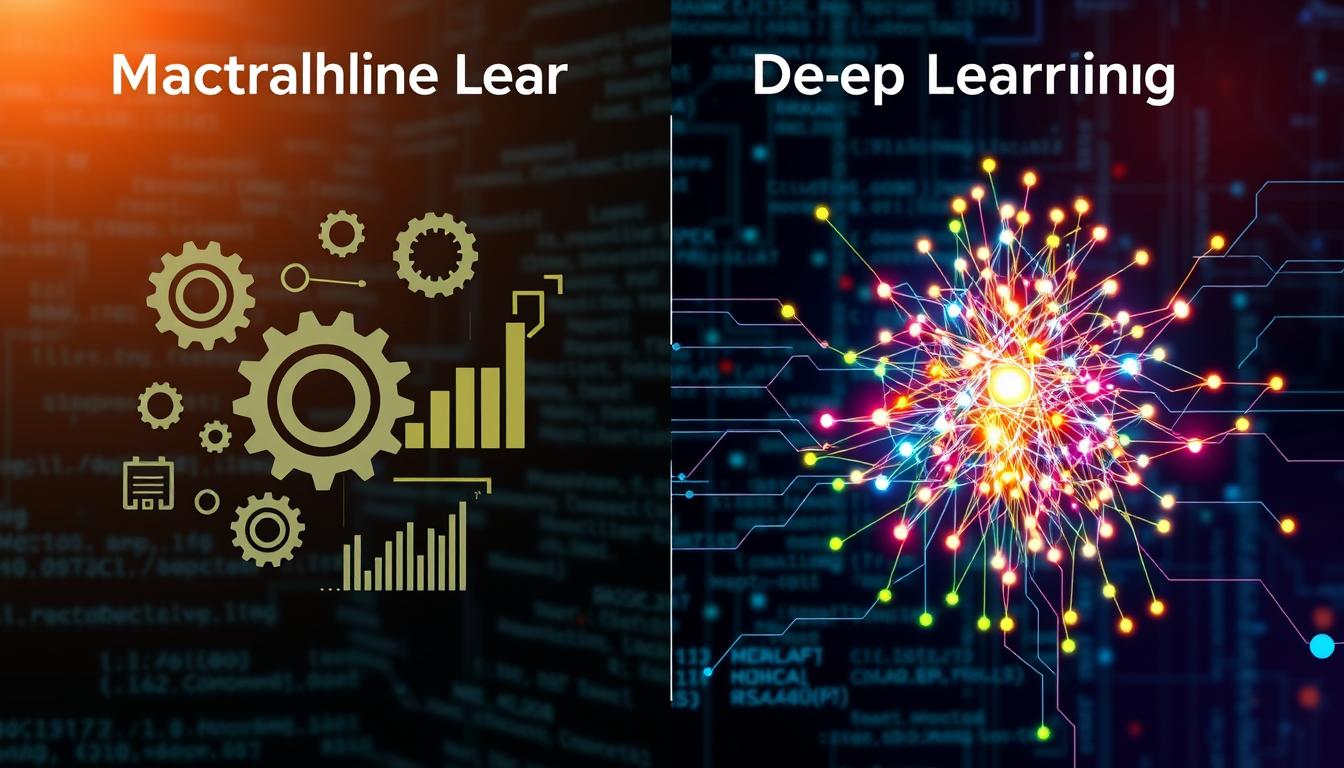The field of artificial intelligence (AI) has seen huge leaps forward. One key area is understanding human language. This technology, called natural language processing (NLP), has changed how we talk to machines. It makes communication between humans and computers smoother and more natural.
NLP uses AI and machine learning to get what we say. It can understand the structure, meaning, and context of language. This lets AI-powered systems give us answers that are more relevant and personal.
This article will dive into NLP and its role in AI. We'll look at how it's changing industries and making our lives better. From virtual assistants to language translation, NLP's potential is vast. It promises a bright future for both personal and professional use.
Introduction to Natural Language Processing
Natural language processing (NLP) is a field of artificial intelligence that lets machines understand and use human language. It combines computer science, linguistics, and machine learning. This way, NLP systems can talk to us in a more natural way.
At the core of NLP is the aim to make machines understand and reply to human language. It involves studying the structure, meaning, and use of language. This lets computers get the gist, figure out the context, and give the right answers. Thanks to NLP, talking to machines is getting easier and more efficient.
NLP has many uses across different fields like customer service, content creation, and language translation. It uses AI and machine learning to handle big amounts of text data. This helps us find important insights and make better decisions.
The field of natural language processing is growing fast. It has the power to change how we use technology and access information in human language. NLP is making it easier for machines to communicate with us, changing how we work, learn, and interact online.

AI's Role in Natural Language Processing
AI has become a key player in natural language processing (NLP). It uses machine learning and deep learning to understand human language well. This is a big step forward in how we interact with computers.
Machine Learning Techniques
AI's success in NLP comes from machine learning. Supervised learning helps NLP systems learn from data. Unsupervised learning lets them find new patterns in language. Reinforcement learning makes them better by learning from feedback.
Deep Learning Models
Deep learning models, like transformers, have made a big difference in NLP. They can understand the complex parts of human language. This has made language processing more accurate and natural.
AI has changed NLP for the better. It makes systems more accurate and efficient. As AI keeps getting better, we can expect even more advanced language understanding in the future.
Key Components of NLP
Natural Language Processing (NLP) is a part of artificial intelligence. It lets machines understand, interpret, and create human language. The main parts of NLP are text processing, speech processing, language understanding, and language generation. These parts help machines to understand and talk in a way that makes sense.
Text processing looks at written text to find important information. It spots parts of speech, named entities, and the mood of the text. Speech processing, however, focuses on spoken language. It changes audio into text and text into audio.
Language understanding is about figuring out what language means. It includes looking at the meaning, structure, and use of language. This lets machines understand the real meaning behind what people say. Language generation is when machines create text or speech that sounds like it was written or spoken by a human.
These main parts of NLP help make many applications work. These include chatbots, virtual assistants, machine translation, and text summarization. As these areas get better, we see more smart and easy-to-use language systems.
Understanding Human Language with AI
AI is changing how we talk to technology. It uses two key parts: syntactic and semantic analysis. These help AI systems understand human language better, making our interactions with tech more natural.
Syntactic Analysis
Syntactic analysis looks at language's structure. NLP algorithms check the parts of speech and sentence structure. This helps them figure out what the text or speech really means.
Semantic Analysis
Semantic analysis digs into the meaning of language. NLP systems use advanced methods to find the deeper meaning of text or speech. They consider word choice, tone, and cultural references to get the message right.
The mix of syntactic and semantic analysis is AI's strength. It lets AI systems understand language's structure and meaning. This makes talking to machines more natural and easy.
As NLP grows, combining these analyses will be key. It will help AI systems understand and respond to human language better.
Applications of NLP Powered by AI
Natural language processing (NLP) powered by artificial intelligence (AI) has opened up many practical uses. It's changing industries and making our interactions with machines better. AI-driven NLP is changing how we talk and process information.
Chatbots and virtual assistants are big examples of AI-powered NLP. They can understand and respond to our language. They offer personalized help and easy access to information or services. Companies use this tech to better serve customers, make support easier, and automate tasks.
Sentiment analysis is another key use of NLP. AI looks at text to find emotions, opinions, and attitudes. It helps businesses understand what customers think, keep an eye on their reputation, and make smart choices. It works on many types of content, like social media and customer feedback.
AI-powered NLP has also changed machine translation. It makes translating languages more accurate and contextual. This is great for global companies and people who want to read and understand content in different languages.
NLP is getting better, and so are its uses. We'll see more in text summarization, content creation, and understanding language. The future of NLP looks bright, changing how we use technology and explore the digital world.
AI and the Future of NLP
The future of natural language processing (NLP) is closely tied to AI advancements. As AI gets smarter, NLP will grow, making language understanding more accurate and contextual. This will lead to more natural interactions between humans and AI, changing how we talk to technology.
One big area is multimodal AI systems. These can handle language in many ways, not just text or speech. They can also understand visual, auditory, and tactile inputs. This means AI can grasp the full context and intent of human communication better.
Conversational AI is another exciting area. As AI gets better at understanding natural language, it will talk more like a human. This will make interactions with AI more intuitive and engaging, making tech feel more natural.
The field of language understanding will also keep growing. AI will learn to give smarter, more contextual answers. This will meet the unique needs and preferences of each user.
The future of NLP is full of possibilities for many industries. From customer service to education and healthcare, AI will make interactions smoother and more natural. This will improve our daily lives and experiences.
Challenges and Limitations of AI in NLP
Artificial intelligence (AI) has made big steps in natural language processing (NLP). Yet, the field still faces big challenges and limits. One major issue is language ambiguity, where words or phrases can mean different things based on context. AI needs to keep improving to understand and answer the complex ways humans talk.
Navigating Language Ambiguity
Language ambiguity is a big problem in NLP. AI models find it hard to know the exact meaning of words or phrases with multiple meanings. This gets even harder because human language is full of nuances, like tone and cultural references.
Achieving Contextual Understanding
Understanding language in a deep, contextual way is another big challenge. AI systems must look beyond the surface to get the real meaning and feelings behind words. This is key for good communication and natural language interaction, but it's still a work in progress.
As language gets more complex and AI faces more limits, research in NLP challenges, AI limitations, language ambiguity, contextual understanding, language complexity, and machine learning is vital. It will help push AI's abilities to understand and respond to human language further.
Best Practices for Effective AI-Powered NLP
Using artificial intelligence (AI) to understand human language is a big step forward in NLP. To make the most of AI-powered NLP, following best practices is key. These include focusing on data quality, model training, and how to deploy the technology. This helps organizations use AI to its fullest potential.
High-quality data is crucial for training NLP models. Good data helps models learn and perform well. It's important to clean and prepare the data to avoid problems like noise or biases.
Choosing the right machine learning methods is also vital. Different tasks need different approaches. Using advanced techniques like neural networks can improve performance.
Keeping an eye on how well the NLP system works is important too. Regular checks help ensure the system stays accurate and reliable. Adjustments can be made as needed to keep it performing well.
By following these best practices, organizations can make the most of AI-powered NLP. This leads to better language understanding and processing.
- Focus on high-quality data for model training
- Employ robust machine learning techniques
- Monitor and continuously improve the NLP system's performance
Conclusion
Natural language processing (NLP) has changed how machines talk and understand us. Thanks to artificial intelligence (AI), NLP systems can now grasp human language better. This has opened up new ways for industries to improve how they communicate and process information.
The future of NLP looks very promising. AI will help us understand language in ways we never thought possible. For example, AI chatbots will make customer service better, and text analysis will make business tasks easier. This will make our interactions with technology more natural and smooth.
Looking forward, NLP will keep getting better thanks to AI. We'll see deeper understanding of language, better sentiment analysis, and handling complex language nuances. AI will help NLP change how we see, process, and interact with digital information.
FAQ
What is natural language processing (NLP)?
Natural language processing (NLP) is a part of artificial intelligence. It helps machines understand and use human language. It combines computer science, linguistics, and machine learning to make systems that talk to us like humans.
How does AI play a role in NLP?
AI is key to improving NLP. Machine learning helps NLP systems learn from data and get better over time. Deep learning models, like neural networks, have made NLP more accurate and contextual.
What are the key components of NLP?
NLP has several important parts. These include text and speech processing, understanding language, and generating language. Together, they help machines understand and respond to human language.
How does AI-powered NLP understand human language?
AI-powered NLP uses two main ways to understand language. Syntactic analysis looks at the language's structure. Semantic analysis explores the meaning and context. This combination helps NLP systems understand human language better.
What are some applications of NLP powered by AI?
AI-powered NLP has many uses. It's in chatbots, virtual assistants, and analyzing sentiment. It also helps with translation, summarizing text, and creating content. As NLP gets better, it will change many industries and make talking to machines easier.
What are the challenges and limitations of AI in NLP?
AI in NLP has made big progress but still faces challenges. It struggles with language ambiguity and understanding language context. Since language is complex, AI needs to keep getting better to fully understand human communication.
What are the best practices for effective AI-powered NLP?
To use AI-powered NLP well, follow best practices. Use high-quality data, choose strong machine learning methods, and keep improving the system. By doing this, organizations can get the most out of AI for language understanding.




